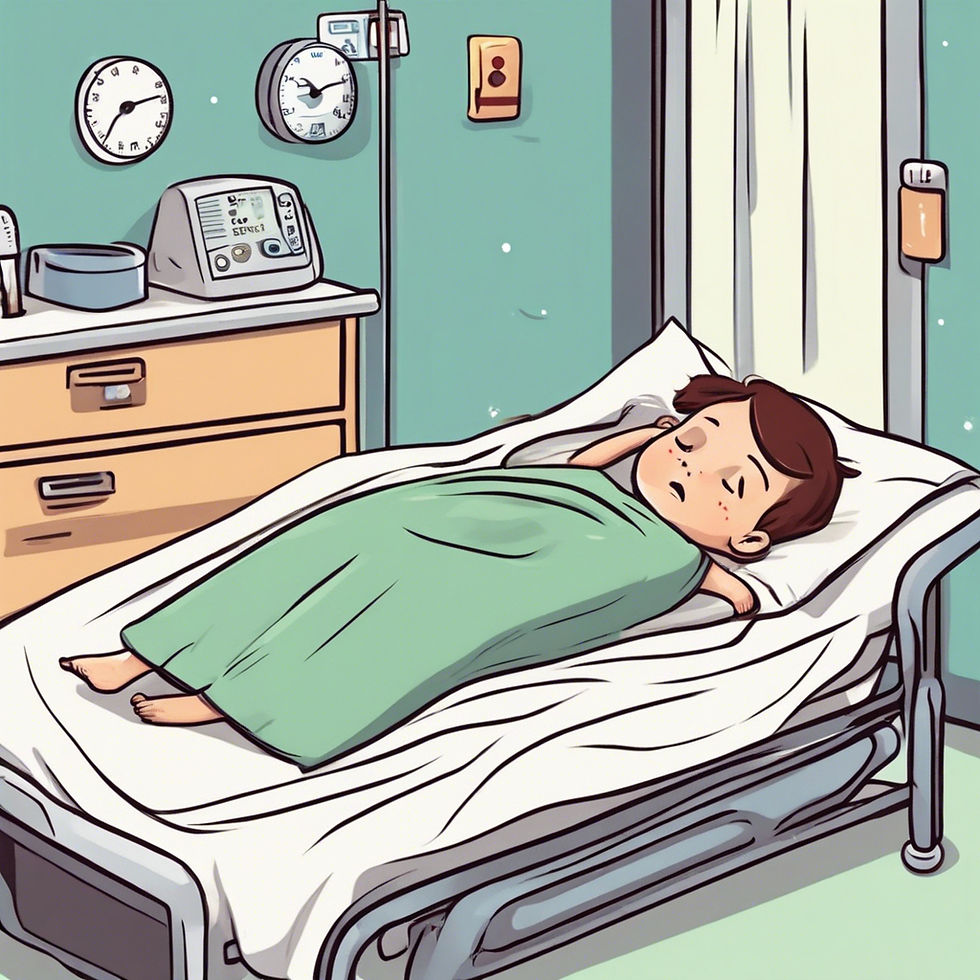Written by Dr. Jared Lasky (PGY1), NP Meirav Siegel-Richman, Dr. Arvind Haran (PGY4), Dr. Erica Nobles (PGY1), Dr. Mustfa Manzur (PGY2), and Dr. Stephen Blumberg

Chief Complaint: Altered mental status, witnessed seizure
History of Present Illness: 31-month-old female BIBEMS for seizure. Per EMS patient seizing on arrival with right eye deviation, shaking extremities.
Mother states patient was in usual state of health this week. Grandparents had watched child for the past two days. Yesterday, child went to ED due to fatigue and change in behavior. Per ED note, patient had normal CBC, CMP, negative aspirin and tylenol; discharged home at baseline.
Per Grandparents, child slept from 7am-3pm. Mother tried to arouse child unsuccessfully around 3-4pm. Mother reports child lying on bed, floppy, eyes open, blinking, and unarousable. Mother states patient might’ve had blinking episodes past few days. EMS administered 2.4mg intramuscular midazolam.
Per family, last week child possibly ingested an edible, and given Robitussin the past few days for cough, denying all other possible ingestions. Family denies fall, trauma or injuries. No fever, rashes, or other systemic complaints. No recent travel.
Vitals: Temp 101.4F, BP 105/74, HR 117, RR 14, O2 saturation not documented
Physical Exam:
Appearance:. She is well-developed. Sleeping, not responsive to painful stimuli.
Head: Normocephalic, atraumatic.
Ears: Tympanic membranes, ear canals, and external ears normal.
Nose: Normal.
Mouth/Throat: Mucous membranes are moist.
Eyes: Pinpoint pupils, minimally reactive to light.
Cardiovascular: Tachycardia, Normal pulses, Normal heart sounds.
Pulmonary: No nasal flaring or retractions, No stridor. No wheezing, bradypnea.
Abdominal: Abdomen is flat. There is no distension, Abdomen is soft.
Skin: Skin is warm, Right side of chest w/ maculopapular rash, few overlying vesicles.
Neurological: Patient not following commands, not withdrawing to painful stimuli. Not moving extremities.
Pertinent Lab Values:
Urine Tox - Methadone positive, THC positive
CSF - Protein 11.6, Glucose 60, RBC 41
CBC without leukocytosis, anemia, thrombocytopenia
CMP - Na 141, K 5.5, Cl 105, CO2 18.4, BUN/Cr 26/0.7, Ca 9.2, Gluc 65, AST/ALT 334/136, AG 17.6
UA - Cloudy with trace ketones, Protein 30, Hyaline casts
Acetaminophen <5, Salicylate <0.3
CT Imaging was pursued due to persistent altered mental status and posturing to rule out intracranial process. Images are provided below.

ED Course: Narcan was administered to the patient in the emergency department once additional history was obtained that patient had access to opioids in the home. Following administration, patient had pupil dilation and return to 4-5mm normal size. Pupils had normal reactivity around 30 minutes after IV narcan administration.
Clinical Discussion: This patient presented as unresponsive and at times posturing. The lack of physical trauma or evidence of hemorrhage on CT and the lack of infection markers on CBC, urinalysis, and cultures made ingestion more likely. Patient's responsiveness to narcan and positive urine toxicology screen for methadone made opioid ingestion a top diagnosis.
In pediatric patients with AMS, ingestion must be on the differential and a poor history is not uncommon. We did not know that the patient had easy access to methadone and heroin until after the CT. Knowing this earlier would have expedited appropriate treatment, but also would have increased the risk of anchoring.
Pediatric opioid ingestion can lead to cerebellar edema, putting the child at high risk for brain stem herniations. Early consults, constant monitoring, and neuroprotective measures should be initiated.
Patients in this condition may need intubation and, eventually, surgery. Appropriate labs should be drawn and materials opened to expedite these actions. Other neuroprotective actions such as fluid restriction, hyperventilation, and diuretics can be tried, but lack significant clinical evidence in the setting of POUNCE syndrome.
Continued management of opioid ingestion with naloxone can be helpful but should be titrated to a RASS of 0 to (-1). Bringing the patient to full consciousness may lead to discomfort and agitation from withdrawl and brain swelling which could complicate monitoring and management. Imaging results for these patients can have subtle findings such as decreased in grey-white matter ratio or mild swelling. Given the small space of the cerebellar compartment even small amounts of swelling can cause significant changes in mental function.
Jared's Takeaways:
Histories can be inaccurate and incomplete. Family later stated that the grandparents keep methadone, heroin, and cocaine in the house; however, the family didn't think the child was able to access it.
In pediatric opioid intoxication, brain swelling has a higher risk for cerebellar swelling, increasing the risk for herniation. Tonsillar herniation is one of the most life threatening sequelae of POUNCE. Early neurosurgical and neurology consultation is important for survival.
Narcan is both diagnostic and therapeutic. Given the prevalence of opioids, the risks to patients if opioid ingestion is missed, and the risk profile of narcan a low threshold to use of narcan can be used to help rule in and rule out diagnosis in children with otherwise unexplained AMS.


Comments